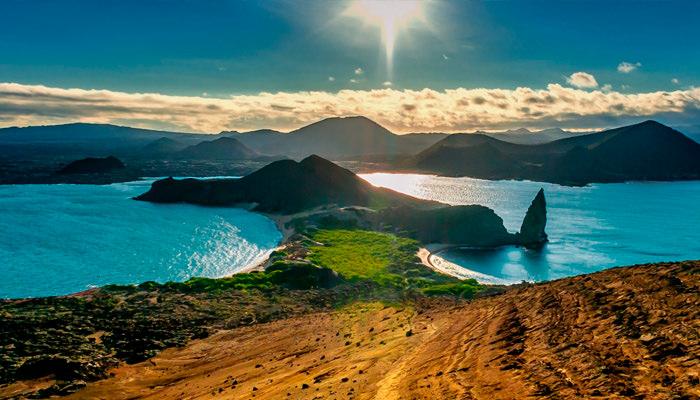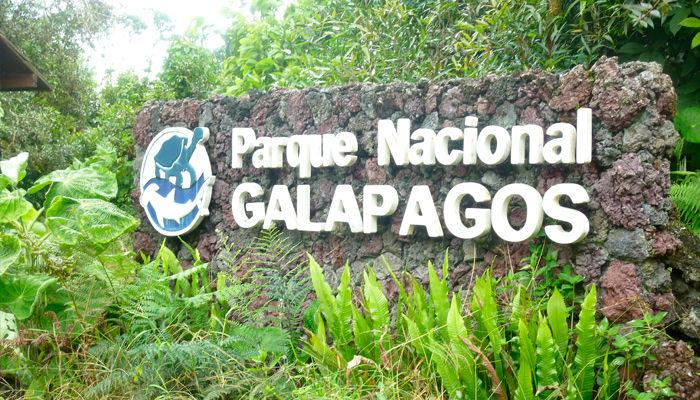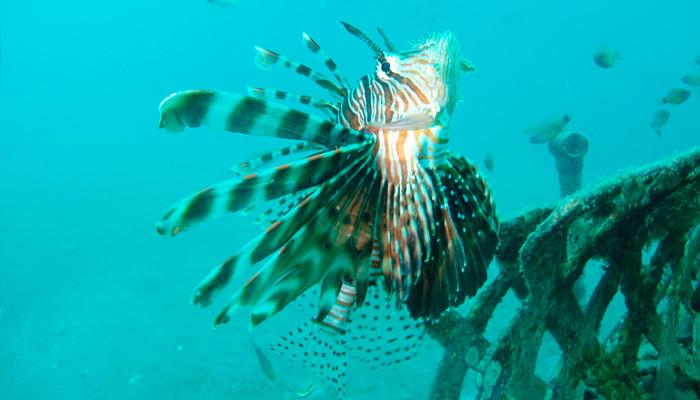What makes Galapagos Islands so special?
You might have enjoyed the mesmerizing beauty of the Alps or the Himalayas, or visited the vast deserts, across the world but if you are craving for a vacation that combines both, beautiful landcapes and close encounters with wildlife, exploring the Galapagos Islands is the best thing that you can do. If you are wondering how the islands and the beaches of Galapagos are different from other beaches of the world, and why they are so special, the answer lies in the amazing wild life of this region.
Ideal Location

The Galapagos Islands, Ecuador are an archipelago of volcanic islands, which are located on either side of the Equator, in the Pacific Ocean. The islands and the surrounding waters form a national park, a biological marine reserve and an Ecuadorian province. The Galapagos Islands are famous for playing host to countless endemic species and this is why Galapagos happens to be one of the most popular travel destinations for people who are interested in enjoying a variety of wildlife. If you have been waiting for long to go on a vacation and explore some amazing wildlife, Galapagos is the place to head straight to. Before you plan your itinerary, you must know the details of the parks and the wildlife that you might get to witness there.
The Galapagos National Park, of course!

This is the first national park of Ecuador and also happens to be a UNESCO World Heritage Site. The park is located across the 97% of the total land area of the Galapagos Islands, Ecuador. While enlisting the park as one of the World Heritage Sites in Danger, UNESCO pointed out how the park as well as the Galapagos Islands is exposed to risks, posed by the human civilization. Fast paced human development, poorly controlled immigration and flourishing tourism industry, cause threat to the species, living in the islands. However, strong measures were put in place by the park authority in order to control the immigration, tourism and the development of the communities that already exist in Galapagos.
Today, Galapagos National Parkworks to fulfill 3 key objectives namely:
- Conservation of the native and endemic species,
- Encouraging breeding, safety and conservation of animals and plants,
- Island control and monitoring.
When visiting this park, the sight to behold is that of the famous giant tortoises. These tortoises are the most representative species of the Galapagos Islands, Ecuador. After the human onslaught on this region brought down the number of these tortoises from a whopping 250,000 to merely 20,000 individuals, the park’s Directorate today works for the conservation and recovery of the 11 species that are in existence till date.

A major part of the breeding and reproduction work occurs at the Fausto Llerena Breeding Center. Which is located in the facilities of Santa Cruz Island’s Charles Darwin Research Station and the Directorate of the Galapagos National Park. At present, this Center is home to over 1,000 tortoises from the islands of Santiago, Santa Cruz, Española and Pinzón. Of these, 75 tortoises that are adults are held for ecotourism and reproductive purposes. You can also see these giant tortoises from close quarters on Floreana Island, where 32 adult and young tortoises are held in a pen.
However, the purpose of this pen is to take care of, protect and maintain the tortoises and to help tourists observe them. Thus, during your visit to the park, don’t forget to set a date with these tortoises. If you are lucky, you may even catch them in action of having their food. Being herbivores, these tortoises survive on leaves, grasses and lichens.
These species, indeed!
The following too draw large crowds from far and wide, and you too can see them during your tour of Galapagos Islands, Ecuador:
- Blue-footed Booby. This bird is worth paying a visit, not only because of its physical beauty, but also for its interesting nature. It covers its kids with the blue feet and thus, keeps them warm. It dives into the sea from a certain height in order to hunt its prey.
- Red-footed Booby. Unlike their blue-footed counterparts that nest on land, these birds prefer the trees. They have a streamlined, torpedo shaped body, along with red feet and legs. Their pale blue bill is another significant feature, which is similar to that of the blue-footed boobies. They too dive for their food, where their streamlined body helps them have the right motion.
- Marine iguana. The marine iguana is found only on the Galapagos Islands, Ecuador. It has the ability to forage and live in the ocean, and this is what makes it a marine reptile. Due to its presence throughout all the islands of the archipelago, it is also known as Galapagos marine iguana. Isabela Island, Santa Cruz island, Fernandina Island, Genovesa Island, San Cristóbal, Santiago Islands and Pinta Island are some of the places where these marine iguanas can be spotted.
- Land iguana. You can find two species of land iguana in the Galapagos Islands. Ecuador namely Conolophus pallidus which inhabits the island of Santa Fe and Conolophus subcristatus, which is a native species in six islands. These yellowish animals are large in size (more than 1 meter long), and the males of the species weigh up to 13 kilograms. Galapagos land iguanas live in the drier areas of the islands. In the mornings, you can find them sprawled under the hot equatorial sun, while they get under the shade of rocks, cactus, trees or other vegetation as the day progresses to flee the heat of the midday sun. These animals dig the ground and sleep there at night to conserve their body heat.
- Bottle-nosed dolphin.This is one of the most unique species of dolphins and can be spotted in the Galapagos oceans. Usually, it is grey in color and is white at the underside. These dolphins have a height of two to four meters and a weight of 150 to 650 kg. The males are heavier and longer than the female dolphins. The females live about ten more years than their male counterparts.
- Hammerhead sharks. These sharks can be spotted in almost all the islands of the Galapagos. Bartolome, Wolf, Santa Cruz and Darwin islands are some of those where you can spot them. They are usually found in the warmer water like that of the coastal waters of the Galapagos. They are quite aggressive in nature and survive on rays, fishes, crustaceans, octopuses, squids and cephalopods. The great hammerhead sharks are extremely ferocious and often attack other sharks. Though hammerheads don’t seek human prey usually, they might attack, when provoked. They have wide eyes, positioned in a way so that they can have a wide vision and swim with ease. They also have certain sense organs, placed between the eyes, which help them detect any sort of changes in the electrical field and pressure.
- Sea lions. Galapagos sea lions breed exclusively on the Galapagos Islands, Ecuador. You can also spot them on Isla de la Plata, albeit in small numbers. Since these animals are social by nature, they are often seen sun-bathing on rocks or sandy shores. You may even spot a few gliding through the surf in a stylish manner. These sea lions have a playful nature, bark loudly, and show attractive agility in the water.
- Fur seals. Despite having a “seal” in their name, theses animals are a category of sea lion. Though many people think the fur seals to be much less abundant than sea lions in Galapagos. Their population numbers are quite similar. Since fur seals typically favor rockier, more rugged and shadier shores than sea lions, they are seen in regions that are less frequented by people. These animals are less tolerant of heat as compared to sea lions. Though Galapagos sea lions and fur seals are morphologically similar, you can tell their difference by the thickness of their fur coat, which is much more on the fur seals. Also, fur seals usually have a smaller size with shorter and broader heads. They have bulging eyes and protruding ears, in addition large front flippers that help them in climbing rockier coasts.
- Bats. Galapagos Islands, Ecuador play host to two species of bats, namely Lasiurus brachyotis and Lasiurus cinereus, though very little is known about them. The former inhabits the coastal zones and the highlands of San Cristóbal and Santa Cruz, and migrates between these regions seasonally. The latter is light brown and has white fur tips. It eats insects. While Lasiurus brachyotis tends to forage close to the ground. Lasiurus cinereus prefers roosting in scrub bushes or Mangrove trees during the day.
Apart from these animals, you can also find rice rats, several species of toothed whales (such as the Killer Whale, Pilot Whale, Sperm Whale, False Killer Whales etc in the Galapagos Marine Reserve), in addition to numerous aquatic mammals that swim in and out of the Galapagos Marine Reserve. Therefore, make sure to catch some of these species during your tour of Galapagos Islands, Ecuador.



Comments